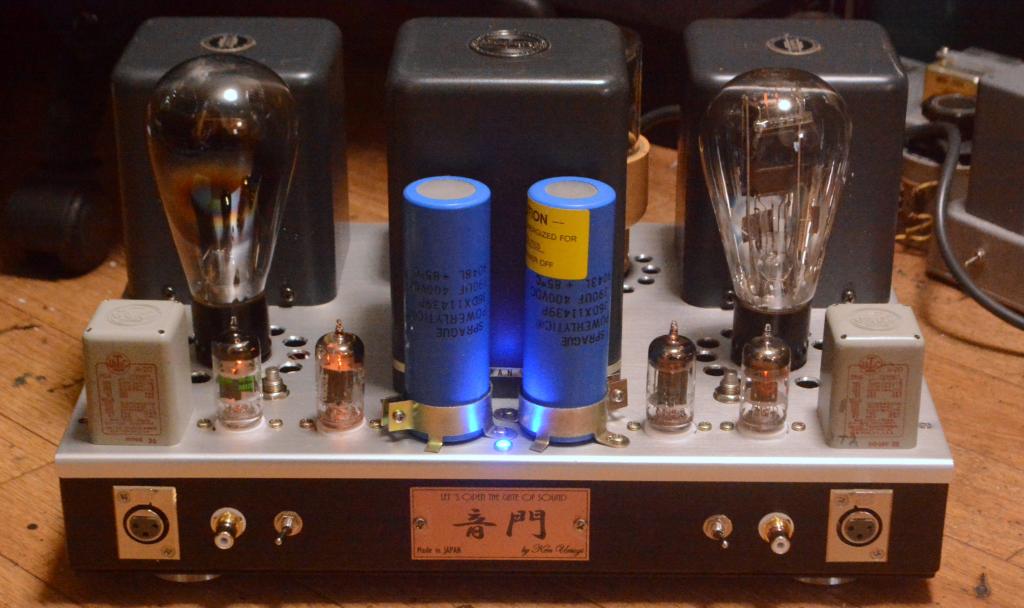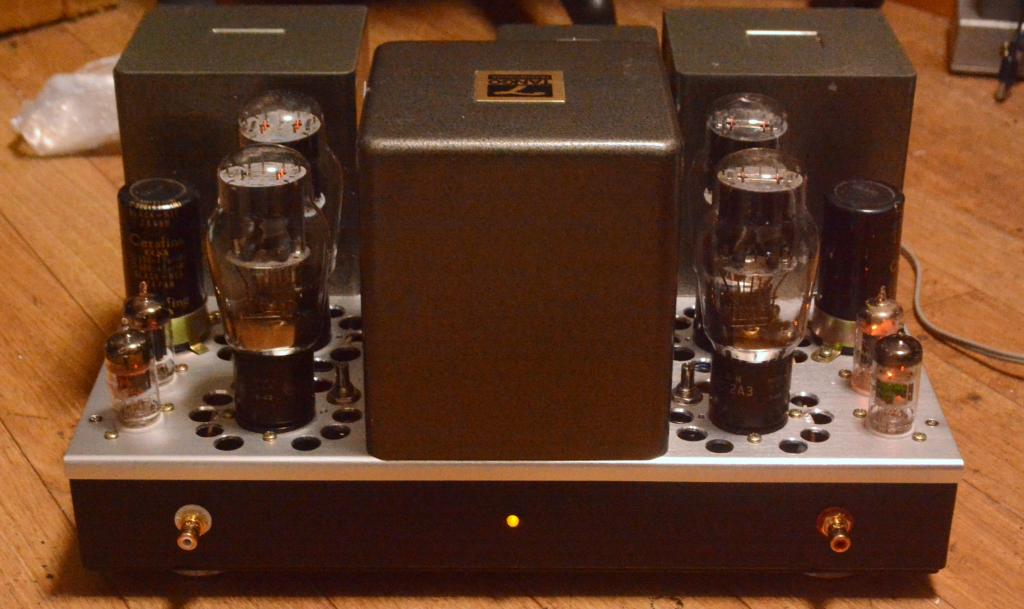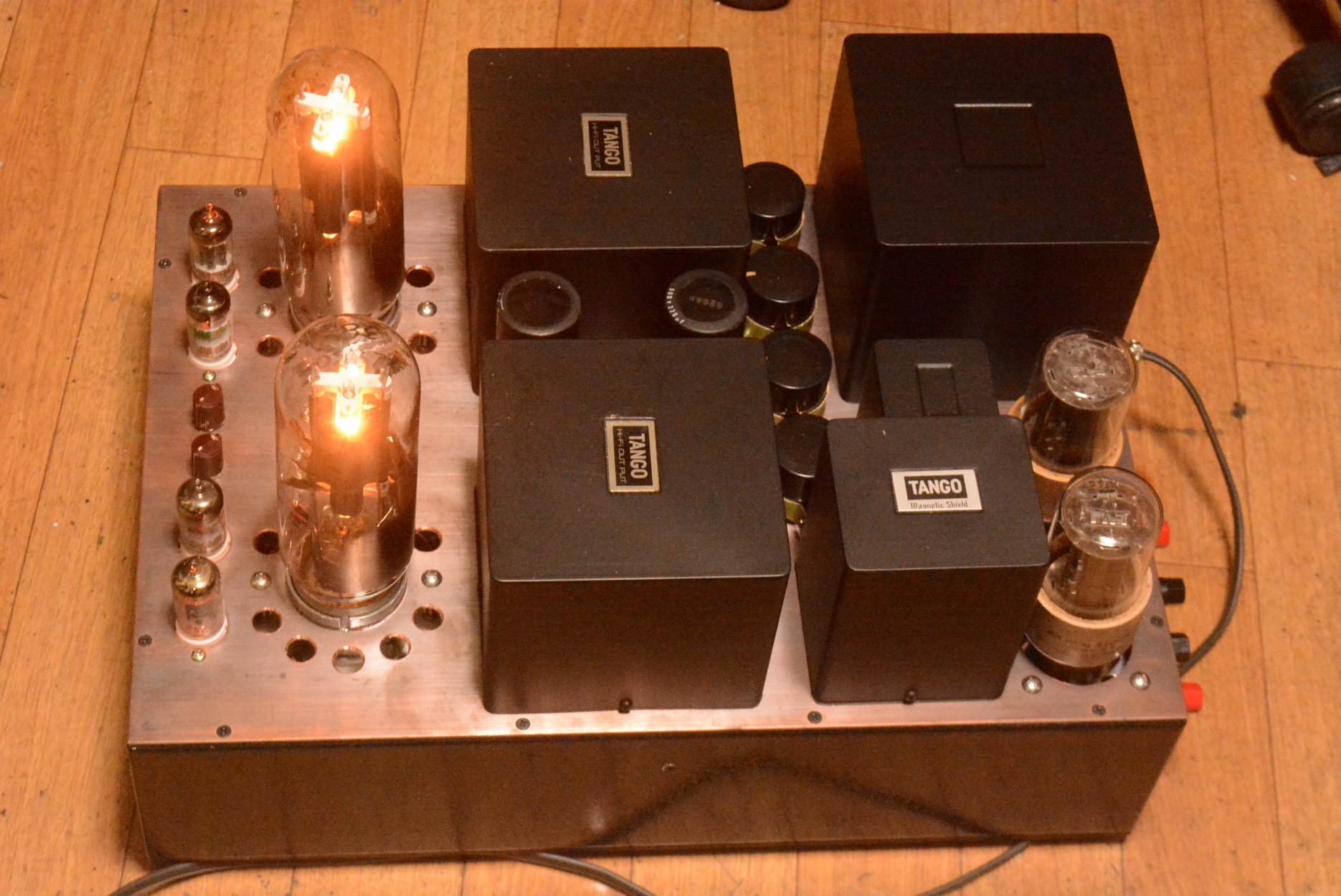We can provide power transformer which use for 117V, 220V, 230V, 240V.
YouTube channel > Otomon YouTube Channel
Facebook Channel: Otomon Vintage FB
YouTube channel > Otomon YouTube Channel
Facebook Channel: Otomon Vintage FB
I will give discount 10% or more for all item in my eBay listing, Contact Us for more detail
Audio Discussion - Master Kondo -Audio Note (Part 3)
To be continued Kondo-san article. It is part 3.
Part 3 (written in late summer, 1999)
High Voltage Resistant FET Amplifier
The first product made by Audio Note Japan was a pre-amplifier, for which I used a high voltage resistant FET developed by Mr. Shigeru Terada in cooperation with Shindengen. The field-effect transistor was usually used as a voltage element like a vacuum tube. But because of its big distortion this transistor was not used for an amplifier pursuing a high performance.
Part 3 (written in late summer, 1999)
High Voltage Resistant FET Amplifier
The first product made by Audio Note Japan was a pre-amplifier, for which I used a high voltage resistant FET developed by Mr. Shigeru Terada in cooperation with Shindengen. The field-effect transistor was usually used as a voltage element like a vacuum tube. But because of its big distortion this transistor was not used for an amplifier pursuing a high performance.
When used as a voltage element in place of a vacuum tube, FET showed a Vp-Ip curve peculiar to the semiconductors and profusely generated second higher harmonics. Moreover, its low voltage resistance (about 50V) made FET difficult to be used. Then, Mr. Terada developed a FET that could resist 200V. This phenomenal improvement made the job of amplifier designing much easier and expanded ranges of low distortion. I designed a pre-amplifier using this FET, which brought about "Meister-7", alias "M-7". The photo below shows the first unit of this model. The large box on the top contains oil-condensers and chemical condensers for the power source. After that, I designed a more compact "M7-II" with low distortion, for which I chose a Cascode circuit in the amplification stage. This circuit contributed to success in reducing leakage current dramatically and at the same time canceling distortion. I used an oil-condenser for the coupling condenser. The discontinuation of production of FET called a halt to the production of M-7, which had reached 100 units. I hear that some units are still being cherished.
Emergence of "Ongaku" Amplifier
Why is the tone of the vacuum tube amplifier favored? One of the factors in terms of the circuit will be its ability to handle high B-voltage. Among the tubes available to us today, "211" can take as much as 1,000V. "211" is equipped with a coarse grid and has very few stray electrons thanks to its low bias, which means that this tube has excellent linearity of Vp-Ip characteristic. In fact, the mu (amplification factor = 4) linearity is flat. Everybody might think that he can design a high performance amplifier only if he uses such a fabulous element. I made a number of 211-S amplifiers, but was not thoroughly satisfied with their tone quality although they showed excellent characteristic. They lacked 'tenderness' of 2A3 and 'depth' of 300B. After a succession of trial and error I reached a conclusion that the problem had something to do with the tone quality of the circuit elements used for "211" that leaves little ambiguity. Therefore, Mr. Yasuhiro Oishi helped me wind silver wires around the silicon steel. The result was just incredible. What a marvelous sound! Encouraged by this discovery, I next made silver-plated condensers. These inventions produced the kind of tone that nobody had ever experienced before, and Mr. Masahiro Shibazaki of Sibatech Inc. aptly named the amplifier "Ongaku" (music).
Tchaikovsky's "Pathetique" Symphony
What an introvert music! Its mood is transformed all of the sudden after the second theme of the first movement. I tried to make my own interpretation of this music. A young man starts on his journey of life with anxiety. He fights to the limit with himself and the world. A glimpse of light rescues him and he wins. But there is little time left for even a transient relief. Now he must confront underground spirits. The roaring timpani spellbinds listeners with fear. In time he reconciles with the spirits and calmly falls into sleep with a deep sigh. This symphony is full of strange orchestrations. Brass instruments always follow bass clef of woodwinds. Low string instruments sound groaning throughout. A thunderous fortissimo is followed by an impossible pianissimo. Ritardando and accelerando are alternately and obstinately repeated. High performance techniques are required of the orchestra, and preposterous technology is demanded of the sound reproduction equipment. I seriously wonder if mediocre amplifiers and speaker systems can fully reproduce the consideration that Tchaikovsky intended to pay to that delicate music. At this point of time I am confident that my amplifiers, speaker systems and cartridges can convey the exquisite shades of the music more deeply and faithfully than any other equipment. My equipment stands on its own.
"211" and "300B"
The performance of "300B" is almost comparable with that of "211'. Both were American inventions at the time when that country was still enthusiastic in making of consumer products. In a way '300B" is easier to use, because it only requires 400V for B power. It was Japanese audiophiles that made the world recognize the superb tone of "300B". If you make a 300B amplifier you would understand that it has a unique tone. Someone said that the secret lies in in its structure in which the filament is hung down. You will see a spring hang the filament. Remember that the echo machine was of spring-type. That echo machine was relived inside a vacuum tube. When you hit the glass, it sounds somehow convincing. The material of the heater makes the difference between "211" and "300B". "211" is filled with thorium to increase the strength. Mind you, this tube had been intended for military tanks! The difference of materials for the heater affects the tone of the amplifier. The tone of the 211 amplifier is crisp and firm. I should add that Golden Dragon's 300B shows satisfactory electrical characteristic. I am proud to say, because that tube is equipped with the tungsten invented by Japan's most advanced technology.
Why is the tone of the vacuum tube amplifier favored? One of the factors in terms of the circuit will be its ability to handle high B-voltage. Among the tubes available to us today, "211" can take as much as 1,000V. "211" is equipped with a coarse grid and has very few stray electrons thanks to its low bias, which means that this tube has excellent linearity of Vp-Ip characteristic. In fact, the mu (amplification factor = 4) linearity is flat. Everybody might think that he can design a high performance amplifier only if he uses such a fabulous element. I made a number of 211-S amplifiers, but was not thoroughly satisfied with their tone quality although they showed excellent characteristic. They lacked 'tenderness' of 2A3 and 'depth' of 300B. After a succession of trial and error I reached a conclusion that the problem had something to do with the tone quality of the circuit elements used for "211" that leaves little ambiguity. Therefore, Mr. Yasuhiro Oishi helped me wind silver wires around the silicon steel. The result was just incredible. What a marvelous sound! Encouraged by this discovery, I next made silver-plated condensers. These inventions produced the kind of tone that nobody had ever experienced before, and Mr. Masahiro Shibazaki of Sibatech Inc. aptly named the amplifier "Ongaku" (music).
Tchaikovsky's "Pathetique" Symphony
What an introvert music! Its mood is transformed all of the sudden after the second theme of the first movement. I tried to make my own interpretation of this music. A young man starts on his journey of life with anxiety. He fights to the limit with himself and the world. A glimpse of light rescues him and he wins. But there is little time left for even a transient relief. Now he must confront underground spirits. The roaring timpani spellbinds listeners with fear. In time he reconciles with the spirits and calmly falls into sleep with a deep sigh. This symphony is full of strange orchestrations. Brass instruments always follow bass clef of woodwinds. Low string instruments sound groaning throughout. A thunderous fortissimo is followed by an impossible pianissimo. Ritardando and accelerando are alternately and obstinately repeated. High performance techniques are required of the orchestra, and preposterous technology is demanded of the sound reproduction equipment. I seriously wonder if mediocre amplifiers and speaker systems can fully reproduce the consideration that Tchaikovsky intended to pay to that delicate music. At this point of time I am confident that my amplifiers, speaker systems and cartridges can convey the exquisite shades of the music more deeply and faithfully than any other equipment. My equipment stands on its own.
"211" and "300B"
The performance of "300B" is almost comparable with that of "211'. Both were American inventions at the time when that country was still enthusiastic in making of consumer products. In a way '300B" is easier to use, because it only requires 400V for B power. It was Japanese audiophiles that made the world recognize the superb tone of "300B". If you make a 300B amplifier you would understand that it has a unique tone. Someone said that the secret lies in in its structure in which the filament is hung down. You will see a spring hang the filament. Remember that the echo machine was of spring-type. That echo machine was relived inside a vacuum tube. When you hit the glass, it sounds somehow convincing. The material of the heater makes the difference between "211" and "300B". "211" is filled with thorium to increase the strength. Mind you, this tube had been intended for military tanks! The difference of materials for the heater affects the tone of the amplifier. The tone of the 211 amplifier is crisp and firm. I should add that Golden Dragon's 300B shows satisfactory electrical characteristic. I am proud to say, because that tube is equipped with the tungsten invented by Japan's most advanced technology.
The Other Same Items
Newest Items In Same Category



